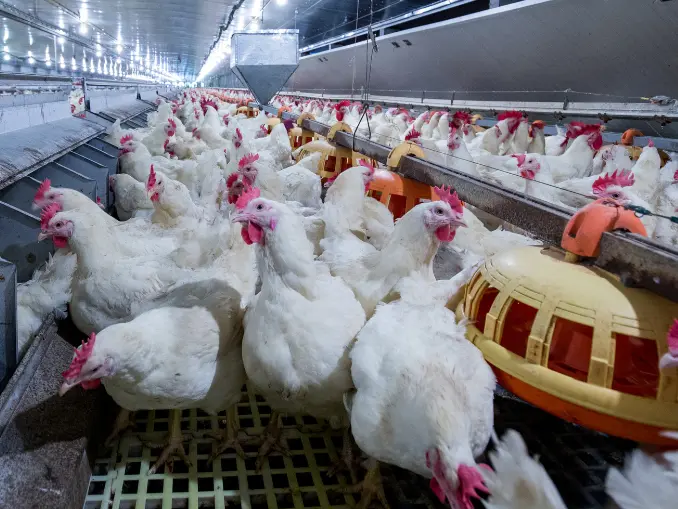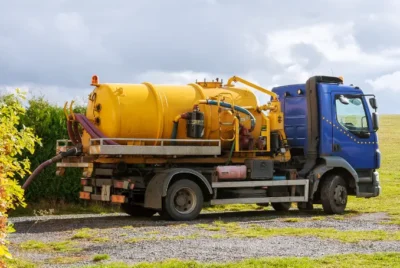Future of Waste: Latest Innovations in Poultry Septic Tank Technology

Managing waste on poultry farms is a big challenge. Traditional ways of dealing with chicken waste can be messy, costly, and bad for the planet. As farms grow and rules about pollution get stricter, farmers need smarter, cleaner ways to handle waste without spending too much money.
The good news is that new technologies for poultry septic tanks are changing the game. These innovations promise to make waste management easier, cheaper, and more eco-friendly. But, switching to these new systems isn’t always easy. Farms have to invest money upfront, so, in this article, you will learn how to use new technology, and fit it into your existing operations.
Advancements in Septic Tank Design
Modular Designs for Scalability and Ease of Installation
Modular designs are revolutionizing the way septic systems are constructed and expanded. This approach allows for the septic system to be easily scaled up or down based on the changing needs of the poultry farm.
Modular units can be prefabricated and delivered to the site, significantly reducing installation time and costs.
Additionally, these designs offer flexibility in site layout and can be adapted to varying site conditions and space constraints.
Smart Monitoring Systems for Efficient Waste Management
Smart technology integration into septic systems introduces real-time monitoring and management capabilities.
These systems can track various parameters, such as waste levels, pH, temperature, and effluent quality, sending alerts for maintenance or potential issues before they become serious problems.
This proactive approach ensures the septic system operates optimally, reduces system failure risk, and minimizes environmental impact.
Integration of Greenhouse Gas Emission Reduction Technologies
Recognizing the impact of greenhouse gas (GHG) emissions from waste management processes, the latest septic tank technologies are incorporating methods to reduce emissions.
Techniques such as anaerobic digestion within the septic system can significantly lower the amount of methane—a potent greenhouse gas—released into the atmosphere.
Some systems are also exploring the capture and utilization of these gases for energy production, adding a renewable energy component to waste management practices.
Poultry Septic Tank Materials and Construction Innovations

Use of More Durable, Corrosion-Resistant Materials to Extend Lifespan and Reduce Maintenance
To extend the lifespan of septic tanks and reduce the need for frequent maintenance, manufacturers are increasingly turning to materials known for their durability and resistance to corrosion. High-Density Polyethylene (HDPE) and Fiberglass Reinforced Plastic (FRP) are prominent examples.
These materials withstand the harsh, corrosive environment of waste material better than traditional concrete or steel, significantly extending the service life of the tanks.
Moreover, these materials resist the buildup of waste residues, reducing cleaning and maintenance requirements.
Lightweight, Composite Materials for Easier Installation and Transportation
The shift towards lightweight, composite materials has significantly impacted the ease of installation and transportation of poultry septic tanks.
Materials such as HDPE and various composite fabrics are not only strong and durable but also much lighter than traditional materials. This weight reduction allows for easier handling and movement of septic tanks, which is particularly beneficial in remote or difficult-to-access locations.
The lightweight nature of these materials can lead to lower transportation costs and a smaller carbon footprint associated with the installation process.
Eco-Friendly Materials That Reduce Environmental Impact.
In response to growing environmental concerns, there is an increasing focus on utilizing eco-friendly materials in the construction of septic tanks. These materials are selected not only for their performance and durability but also for their lower environmental footprint.
Some eco-friendly materials are made from recycled content or are more readily biodegradable at the end of their life cycle than traditional options. The use of such materials contributes to a circular economy, where waste and resource use are minimized.
Additionally, the incorporation of green construction practices and materials that contribute to the efficient operation of septic systems (such as enhancing the treatment process and reducing energy consumption) further reduces the overall environmental impact.
Poultry Septic Tank Waste Processing Techniques

Enhanced Biological Treatment Processes for Faster Breakdown of Solids
Enhanced biological treatment processes focus on accelerating the breakdown of organic solids by using more efficient microbial consortia or optimizing environmental conditions to favor rapid microbial activity.
These processes can significantly reduce the amount of solid waste, speeding up the overall treatment process and reducing the frequency of septic tank cleanouts. Techniques such as the introduction of specific strains of bacteria or enzymes that are more effective at digesting poultry waste materials are examples of this innovation.
Integration of Anaerobic Digestion for Biogas Production
Anaerobic digestion is a process that breaks down organic matter in the absence of oxygen, producing biogas—a mixture of methane and carbon dioxide—which can be used as a renewable energy source.
Integrating anaerobic digestion into poultry septic tank systems not only helps in managing waste but also provides an opportunity to generate energy. This energy can be used directly on the farm for heating, and electricity, or even cleaned and fed into the gas grid, offering an additional revenue stream while reducing greenhouse gas emissions.
Novel Filtration and Aeration Systems to Improve Effluent Quality
Innovations in filtration and aeration systems have significantly improved the effluent quality from poultry septic tanks.
Novel filtration technologies, including membrane bioreactors (MBRs) and advanced sand or gravel filtration systems, can remove a higher proportion of solids and pathogens from the effluent.
Meanwhile, improved aeration systems increase oxygen levels in the treatment process, enhancing the efficiency of aerobic digestion processes and further improving effluent quality.
These systems ensure that the water leaving the septic tank is cleaner, reducing the potential for pollution and making it safer for discharge into the environment or for use in agricultural applications.
Use of Biochar and Other Amendments to Improve the Quality of Effluent for Agricultural Use
The addition of biochar and other amendments to poultry septic tank systems is a relatively new approach aimed at improving effluent quality. Biochar, a form of charcoal produced from biomass sources, has been shown to have beneficial properties for waste treatment, including the adsorption of pollutants and the improvement of microbial activity.
When added to septic systems, biochar can help reduce nitrogen levels, phosphorus, and other contaminants in the effluent, making it more suitable for agricultural use as irrigation water or as a nutrient source.
Additionally, the use of biochar and similar amendments can enhance the soil’s water retention and fertility when the treated effluent is used for agricultural purposes.
Poultry Septic Tank Smart Technology Integration

Iot-Based Monitoring Systems for Real-Time Waste Level and Gas Emission Tracking
Internet of Things (IoT) technology involves using sensors to monitor various conditions in real time. In the context of poultry septic tanks, these sensors can track how full the tank is (waste levels) and measure the types and amounts of gases being produced.
This information is sent to a computer or smartphone, allowing for constant monitoring without needing to manually check the tank.
This helps in ensuring that the tanks are emptied or treated before they overflow and in monitoring the health of the system to prevent issues related to gas buildups.
Automated Waste Treatment Processes That Adjust Based on Waste Composition and Volume
Smart technology can automatically adjust the treatment process based on what’s in the waste and how much there is. If the system detects that the waste composition has changed or if there’s more waste than usual, it can change how it treats the waste to ensure it’s processed efficiently. This means the system is always working at its best, no matter how the waste changes.
Predictive Maintenance Algorithms to Prevent Failures and Optimize Service Intervals
Predictive maintenance uses data and algorithms to predict when parts of the septic system might fail or need servicing. By analyzing the data collected from the system, it can tell when something is starting to wear out or if a component is likely to break down soon.
This allows for parts to be replaced or serviced before they cause a problem, preventing unexpected failures and ensuring the system is always running smoothly. This not only helps in avoiding emergencies but also optimizes the timing for maintenance tasks, potentially saving money and extending the life of the system.
Poultry Septic Tank Renewable Energy Integration

Systems Designed to Harness Biogas as a Renewable Energy Source for Farm Operations
Some advanced septic tanks can turn the waste from poultry into biogas, a type of renewable energy. This gas can be used to generate electricity or heat for the farm, turning something that was once just waste into a valuable resource. This process not only helps in managing waste but also provides a green energy source, reducing reliance on fossil fuels and saving money on energy bills.
Solar-Powered Septic Tank Operations to Reduce Operational Costs and Carbon Footprint
By installing solar panels, a poultry farm’s septic tank operations can be powered by sunlight, a clean and abundant energy source.
This means the energy used to run pumps, sensors, and treatment processes in the septic system can come from the sun, significantly reducing operational costs and the farm’s carbon footprint. Solar power is a reliable and eco-friendly way to keep the septic system running efficiently without relying on traditional, more polluting energy sources.
Integration With Onsite Renewable Energy Storage Systems
To make the most of the renewable energy generated from biogas and solar panels, some farms integrate these systems with onsite energy storage solutions, like batteries.
This way, the energy produced can be stored and used when it’s needed most, ensuring a constant and reliable power supply for the septic system and other farm operations, even when the sun isn’t shining or biogas production varies. This integration enhances energy independence and ensures a smoother, more efficient operation.
Read also: Stay Legal: Understanding Septic Tank Regulations for Poultry Farms
Poultry Septic Tank Innovations
The future of managing chicken waste is looking brighter thanks to new septic tank technologies. These innovations are making it easier, cheaper, and more environmentally friendly for poultry farms to handle their waste.
While adopting these technologies might require some effort and investment at the start, the long-term benefits include saving money, reducing pollution, and running a more sustainable farm. In short, the latest advances in poultry septic tank technology are a win-win for both farmers and the environment, promising a cleaner, greener future for poultry farming.
If you're ready to embrace these cutting-edge solutions for your septic tank challenges, explore our range of products designed to tackle the most pressing issues in poultry waste management.
Don't let septic tank problems hold your farm back. Check how these innovative products can help you step into the future of waste management, ensuring a cleaner, more sustainable operation for years to come.



